This is Part 3 of the PRISM Primer on China’s Revolution and Maoism, drafted in 2021 on the occasion of the centennial anniversary of the founding of the Communist Party of China (CPC). The study material is offered to all socialists and anti-imperialist and democratic activists, and will be posted in 10 parts.
Read moreIncludes China and Taiwan, Japan, the two Koreas, and the countries of Southeast Asia
This is Part 2 of the PRISM Primer on China’s Revolution and Maoism, drafted in 2021 on the occasion of the centennial anniversary of the founding of the Communist Party of China (CPC). The study material is offered to all socialists and anti-imperialist and democratic activists, and will be posted in 10 parts.
Read moreThis primer on China’s Revolution is a 10-part study material offered to all socialists and anti-imperialist and democratic activists. It was drafted in 2021, intended to be released in time for the centennial of the Communist Party of China, but had to undergo additional additions and revisions. This is Part 1 of the material. The complete primer will soon be available in PDF press-quality format.
Read moreThis Q & A on the land problem, peasant class and agrarian revolution in the Philippines is a follow-up to the just-concluded three-part series of web forums on Philippine Society and Revolution at the National Democratic Online School (Mga Serye ni Tito Jo). In this article, Jose Maria Sison focuses on 17 points to further elaborate on the Special Course on the Peasant Movement.
Prof. Sison, who is founding chairman of Kabataang Makabayan (Patriotic Youth, founded in 1964), posted this Q & A article on his Facebook page on 5 July 2020. PRISM is posting the full text of the article with only minor format adjustments, not only as educational material for Filipinos, but also as reference material for other progressive mass activists and educators in various countries facing similar social conditions.
Read moreThis paper was presented by Prof. Jose Maria Sison to a webinar on the toxic character of US-Philippine relations as well China-Philippine relations, as well as the dangers and opportunities of inter-imperialist contradictions for the Philippine struggle for full national freedom. The webinar, entitled “Exposing Toxic Relationship: Signs Imperialist US is an Abusive Partner”, was conducted on 4 July 2020 and hosted by the national office and University of Santo Tomas chapter of the League of Filipino Students. The video version is available at this YouTube link.
Read moreThis Q & A is the third in a three-part series of web forums on Philippine Society and Revolution at the National Democratic Online School (Mga Serye with Tito Jo). In each web forum, Prof. Jose Maria Sison (JMS) answers the questions posed by Anghelo Godino of Anakbayan-Europa. This third Q & A, focusing on the people’s democratic revolution as the solution to the basic problems of the Filipino people today, was presented on FB Live on 28 June 2020. PRISM is posting the full texts of the said web forums, not only as educational material for Filipinos, but also as reference material for other progressive mass educators and researchers in various countries facing similar social conditions.
Read moreJose Maria Sison, founding chairman of the Communist Party of the Philippines, released to social media on 26 June 2020 his comments on certain views aired by Trotskyites and other anti-communist detractors against the CPP’s revolutionary theory and practice. Sison’s comments take the form of answers to five questions posed by journalist Michael Beltran. The full text follows below, with a few very minor typo corrections.
Read moreThis Q & A is the second in a three-part series of web forums on Philippine Society and Revolution at the National Democratic Online School (Mga Serye with Tito Jo). In each web forum, Prof. Jose Maria Sison (JMS) answers the questions posed by Anghelo Godino of Anakbayan-Europa. This second Q & A, focusing on the basic problems of the Filipino people, was presented on FB Live on 21 June 2020. PRISM is posting the full texts of the said web forums, not only as educational material for Filipinos, but also as reference material for other progressive mass educators and researchers in various countries facing similar social conditions.
Read more
First of series of three web forums on Philippine Society and Revolution at National Democratic Online School (Mga Serye with Tito Jo) Answers by Prof. Jose Maria Sison (JMS) to questions by Anghelo Godino of Anakbayan-Europa
June 14, 2020
1. Can you explain the meaning of “Mayaman ang Pilipinas pero Naghihirap ang Sambayanang Pilipino”? How is the Philippines a rich country?
JMS: The Philippines has rich natural resources. And we have a large population of 109 million, with a labor force of 45 million people, that can be a formidable productive force if mobilized for economic development for the benefit of the Filipino nation.
The Philippines has a tropical climate, with mountains of volcanic origin, forests despite heavy deforestation in the last 50 years and fertile soil, rivers and seas that can assure the people of more than sufficient food and raw materials for manufacturing. It has all the major mineral ores for industrializing the Philippines. It has iron, gold, copper, nickel, oil coal, manganese, chrome, zinc, bauxite and many others. It has huge oil and gas resources in the West Philippine Sea and vast methane gas hydrate deposits In the Bentham Rise in northeast Luzon.
Because of the rich natural resources of the the Philippines, the imperialist powers covet our country and constantly bribe the reactionary politicians to gain access to and control over these resources. We have the human resources to develop these for our own benefit. We have a nation with a high literacy level, skilled workers and peasants and a large corps of professionals in various fields. But unfortunately those who rule the country act in the interest of foreign corporations, the big compradors and landlords.
2. What is the basis of the class division in the Philippines? Does this still apply and relevant now?
JMS: There are four continuing criteria by which social classes are defined in the Philippines: ownership of the means of production, role in the organization of production, share in the distribution of the product and the political mode of thinking.
Ownership of the means of production is the main determinant of the basic exploiting classes. The big compradors own the banks and main trading facilities and import-dependent manufacturing, the landlords own the large tracts of land, the middle bourgeois own medium-type enterprises and the petty bourgeoisie own the small enterprises or small tracts of land that they themselves cultivate or operate with hired farm workers.
Those who do not own any means of production have to work for those who own them. The workers sell their labor power to the capitalists to earn their wages or means of subsistence and most of the peasants till the land and pay rent to the landlords. The various strata of the bourgeoisie either own enterprises or receive relatively high compensation for their professional or technical services in the bureaucracy or in business companies.
Ownership or nonownership of the means of production also determines one’s share in the distribution of the social product. The magnitude of one’s income or share can be large enough for a highly skilled worker to rank himself and live like the middle class. But more than 95 per cent of the workers get wages for bare subsistence.
It is possible for the urban petty bourgeois to shift his class position to that of the capitalist or landlord or to that of the workers on the basis of the political mode of thinking. So can a worker abandon his class by becoming a scab of the capitalist in strikes. Likewise can a peasant abandon his class by becoming an overseer of the landlord.
3. It is said that even in the pre-colonial period of the Philippines the slavery and feudal systems were already existing in their society, what is the difference between the pre-colonial and colonial feudal exploitation? Would it be better if we have not been colonized by the Spanish Empire?
JMS: The small-scale communal system without sharp class differences and the patriarchal type of slave system existed in the pre-colonial times. In the latter system, there were the aliping namamahay (house slaves) and aliping sagigilid (field slaves) for the landowning ruling families headed by the datus and rajahs. They inherited their slave status or lost their free status because of failure to pay debts, the commission of a crime or capture in inter-tribal wars. The feudal system was first established under the Islamic sultanates in Mindanao ahead of the coming of Spanish colonialism. The peasants paid rent to the landlords as well as tribute to religious leaders.
In pre-colonial Philippines, there were mostly small autonomous communities around bigger communities where the ruling families owned land and slaves. The wealthiest owned the joangas which were trading boats that could carry as many as 300 passengers. The less wealthy would own the caracoas that could carry 50 to 100 people. The most commonplace boats were the barangay that could carry 30 persons and the small boats for local fishing. The Islamic sultanates were the highest social formation, with wider agricultural fields and with bigger trading boats of the joanga and caracoa type.
Spain was the colonial power that was able to place the Philippines archipelago under a centralized system of administration, developed feudalism on a wide scale, spread Christianity and cultivated a few Spanish-speaking landlords in more than three centuries. By the law of contradiction, the centralized system of oppression and exploitation over most of the archipelago ultimately resulted in the unity of the people to struggle for national liberation and democracy against colonialism and feudalism.
If the Spanish colonialism did not come, most likely the Islamic feudal social system and religious faith would have prevailed in the Philippines just like in our neighboring countries in Southeast Asia. As historical materialists, we study and analyze the given historical facts and we consider it idle to imagine at length how the Philippines would have become if Spanish colonialism had not come. We have to trace how Spanish colonial domination ultimately led to the Philippine revolution of 1896.
4. Please discuss the motives of Spain in colonizing the Philippines.
JMS: Mercantile capitalism was the overriding economic motive of Spain in colonizing the Philippines. Merchants capitalized the colonial expeditions for the purpose of making profits. They were interested in gold and spices from the Philippines. And eventually the Manila-Acapulco trade developed and thereafter the export of commercial crops from the friar estates. Colonialism was a major method for primitive accumulation of capital in the history of capitalism.
But of course, there were other motives cited to ennoble and glorify colonialism like the desire of the Spanish monarchy and the Catholic church to “civilize” and Christianize the barbarians and pagans. Thus, the motives of Spanish colonialism have been described as God, gold and glory. Up to now, the modern imperialist powers embellish their capitalist operations and wars of aggression with claims to bringing enlightenment, democracy and progress to the peoples that they oppress and exploit.
5. What were the economic and political systems that the Spanish colonialists imposed and how did it become effective in colonizing the country further?
JMS: The Spanish colonialists developed in the main the feudal system through the encomienda system of land grants to the Spanish colonial bureaucrats and military officers, through the accumulation of land by religious orders and through letting the native landlords and merchant-usurers expand their own landholdings and displace the communal form of agriculture.
The Spanish colonialists developed their political system by having a centralized system of administration based in Intramuros, Manila with Spanish citizens being appointed the governor-general and the alcalde-mayor as the provincial administrator and an army of Spanish officers and native conscripts being deployed at key points of the archipelago. At the municipal level, there was the triumvirate of the Spanish curate, the Spanish alferez who was chief of the local civil guards and the native or mestizo governadocillo from the landlord class.
6. How is it possible that Filipinos accepted the Christianity as their religion and what is the effect of this? Besides religion, what kind of culture did the Spanish colonialists impose and how?
JMS: The Spanish priests were chaplains to the Spanish conquistador army. When the native population resisted the conquest, the Spanish soldiers delivered a crushing blow to the resisting community with cannons and sword. Then the Spanish priests would go forward to entice the natives to come out of their hiding places by assuring them of peace and safety.
But there were also many cases of non-resistance because the Spanish conquistadors with came with beads and other token gifts for the ruling family in a community. And the Spanish priests offered to give catechetical education to everyone, especially the mothers and children. The children of the landed families were educated in the Spanish language and religion in schools run by the friars.
Up to the middle of the 19th century, the highest profession a native could aspire for was the priesthood. Thereafter, natives were admitted to the University of Santo Tomas and other tertiary schools to take up courses in law, medicine, engineering and other high professions. Some children of well-to-do landed and merchant families went to Spain to study in the last two decades of the Spanish colonial rule. They included Jose Rizal, Marcelo H. del Pilar, Graciano Lopez Jaena and others who imbibed liberal democratic ideas and formed the Propaganda Movement, with La Solidaridad as their main publication.
7. Did Filipinos resist on the early colonial period?
JMS: Of course, most communities resisted the arrival of the Spanish colonialists. These came from afar, from the opposite side of the vast Pacific Ocean. They usually ran out of supplies and had to requisition from the natives. They could not have been so attractive and so welcome to the natives. They were prone to take things away without paying.
Lapulapu made short shrift of Magellan in the shallow waters of Mactan island. Some decades later in the 16th century, Legazpi came and was also resisted. But he was able to use the tactics of divide and rule more successfully than Magellan. He befriended certain Visayas communities and then recruited from them soldiers for further expeditions and conquest under Spanish officers in other parts of the archipelago.
Before a certain province could be created under an alcalde-mayor, the area was considered a corrigimiento a war zone subject to pacification by the Spanish and was placed under the rule of the corregidor. People in the lowlands along the sea and major rivers were relatively easier to conquer than the tribal communities on high ground, like the Igorots,Mangyans and Lumad. Thus, these upland tribal communities would resist Spanish colonialism and retain the indigenous culture. They have been estimated at 15 per cent of the Philippine population.
The Moro and Igorot tribes were the most outstanding in resisting Spanish colonialism up to its end and in launching counter-offensives. The Moros did not only defend themselves from Spanish offensives but also sailed out to do counteroffensives against colonial outposts as far as the sea coast of northwestern Philippines. The Igorots were successful at warding off attempts of the Spanish colonialism to access and open the gold mines, launched counterattacks, cooperated with Ilocanos who revolted against Spain and joined the Philippine revolutionary movement against Spain and the against US imperialism.
8. What was the goal of the 1896 Revolution? Do they already have a concrete ideology or theories during that time? What do you think their mistakes are so that we can prevent them from happening in waging armed revolution today?
JMS: The goal of the 1896 Revolution was to secure national independence and democracy by force of arms. The leaders of the Katipunan like Bonifacio studied the French revolution and received study materials from those in the Propaganda Movement. Their ideology was liberal democratic. Even if Bonifacio was a worker, he shared this ideology with the anti-colonial ilustrados, plebeians and peasants.
The Philippine revolution of 1896 was successful in defeating Spanish colonialism in 1898 despite the criminal acts of Aquinaldo in eliminating Bonifacio and then Antonio Luna. The fatal weaknesses of the Aquinaldo government would come out in the capitulation to Spain in the Pact of Biak na Bato and then under the pressure of the two-handed policy of US imperialism, one hand offering “benevolent assimilation”, which was sugarcoated with Jeffersonian expressions, and the other a ruthless mailed fist for destroying the revolutionary movement with the machinegun and water cure torture.
The bourgeois-liberal revolutionaries were not yet equipped with Marxism-Leninism to comprehend the nature and capabilites of modern imperialism. The current revolutionary movement has learned lessons not only from the old democratic revolution but also the earlier attempt of the old communist party to lead the struggle for national and social liberation from imperialism and feudalism from 1930 to the early 1950s.
As an individual, Aquinaldo had a weak subjectivist character. Soon after his capture by the US army, he issued a call for the surrender of the people. In contrast, the sublime paralytic Apolinario Mabini had a stronger patriotic character and will. Even in captivity, he prevailed over all pressures on him to bow to US imperialism. Learning a lesson from the capitulationist character of Aquinaldo, the current revolutionary movement is ever ready to reject any counterrevolutionary call of any leader in the hands of the enemy.
9. Is it true that Americans helped us win our revolution? If not, then what is their intention in intervening in the Filipino’s struggle for independence from Spain?
JMS: The US pretended to offer help to the Aguinaldo government in exile in Hongkong. It received money for three shipments of arms but delivered only one shipment. It brought back Aguinaldo and other leaders to Cavite on an American cutter. And he would be able to proclaim Philippine independence on June 12, 1898 “under the protection of the noble and mighty America”.
The Filipino revolutionary forces were able to rapidly strengthen themselves because of victories in battles and the transfer of Filipino colonial conscripts from the local civil guards and Spanish colonial army to the revolutionary side. Thus, they were able to defeat Spanish colonialism on a nationwide scale and occupy all strategic points to encircle Intramuros. But as US reinforcements came from outside the Philippines arrived, the US army pushed out the Filipino revolutionary forces from their advantageous positions in Manila and suburbs.
Finally, the US and Spain secretly agreed that the latter surrender Manila to the former in order to preempt the Filipino revolutionaries from seizing Intramuros. The agreement was in line with the peace negotiations in Paris for Spain to sell the Philippines to the US for the amount of 20 million USD. Thus, the ground was laid for US imperialism to claim victory over Spain and assert power over the Philippines. It led to the outbreak of the Filipino-American War on February 4, 1899 when the US began to attack the Filipino revolutionary forces.
The US had constantly the intention and plan to grab the Philippines for itself as a base for expanding economic territory in Asia, turning the Pacific Ocean into an “American lake” and getting a share of the big Chinese melon which was being divided among the imperialist powers. The US was a modern imperialist power engaged in the struggle for a redivision of the world in order to obtain colonies as sources of cheap raw materials, markets, field of investments and spheres of influence. That’s why it declared war on Spain, a decrepit colonial power, to grab Puerto Rico, Cuba and the Philippines.
10. Why and how did the American imperialists retain feudalism in the Philippines? Did they introduce a new political and economical system? How was it able to retain its colonial rule over the Philippines?
JMS: US imperialism retained feudalism in the Philippines as the base for imposing monopoly capitalism on the entire economy and for acquiring a nationwide network of political puppets from the landlord class. From the symbiosis of feudalism and monopoly capitalism emerged the semifeudal economy and the comprador big bourgeoisie as the chief native ruling class arising from the landlord class.
To make the economy semi-feudal, the US colonial regime allowed the free movement of peasants from one area to another beyond the old feudal controls, expanded the plantations for export, opened the mines, improved the infrastructure for domestic and foreign trade and promoted the public school system but also the private schools run by religious orders to increase the number of professionals and clerks to serve the expanding businesses and bureaucracy,
The US was able to appease the local exploiting classes and retain its colonial rule by promising to grant independence after “educating and training” the Filipinos for self-rule. But in the meantime, it engaged in brainwashing the Filipinos to become “brown Americans”, further entrenching US economic interests, training politicians as agents of both US imperialism and the local exploiting classes and making them pass through stages of subordination to the US. But eventually US colonial rule in the Philippines would be shaken by the inter-imperialist war that led to Japan occupying the Philippines and by the growth of the revolutionary movement.
11. What was the Philippines’ involvement in the Second World War? How was the US imperialism able to come back to rule over the Philippines after the war?
JMS: The Commonwealth government was still a creature and puppet of US imperialism although the US conceded that it was a government in transition to the grant of independence in 1946. Thus, in facing up to the Japanese invasion and occupation of the Philippines, the US and Commonwealth government of Quezon agreed to integrate Filipino troops and eventually pro-US Filipino guerrilla forces into the US Armed Forces in the Far East (USAFFE).
The old communist party was able to build a strong armed revolutionary army mainly in Central Luzon and partly in the Southern Tagalog region during World War II and thereafter but failed to seed the whole country with revolutionary cadres. Due to the anti-fascist united front since 1936, the old CPP and Hukbalahap could have alliance with some USAFFE guerrilla units but maintained their independence and initiative. The two anti-Japan guerrilla forces avoided collision when they could not cooperate.
At any rate, the US was able to come back to rule the Philippines towards the end of World II by reconquering the Philippines from the Japanese imperial army through successful naval, air and ground operations and then granting nominal independence to the Philippines on July 4, 1946 after making sure that the Philippines would remain a semi-colony by retaining its military bases and the property rights of US corporations and citizens. Thus, the US was able able to shift the Philippines from the colonial and semifeudal system before World War II to the semi-colonial and semi-feudal system after the war.
12. The Resistance of the communist party was first seen against the Japanese Occupation in the Philippines in 1942. However, many historians dismiss the involvement of HUKBALAHAP with PKP. Why do you think so?
JMS: The old Communist Party or to be more precise the old merger party of the Communist and Socialist Parties established and led the Hukbo ng Bayan Laban sa Hapon (Hukbalahap). This is an undeniable historical fact. All serious historians acknowledge this fact.
But of course the leadership of the old Communist Party under the Vicente Lava as general secretary made the Right opportunist error called “retreat for defense” which stunted the growth of the people’s party with the fragmentation of the squadrons or companies to small teams of 3 to 5 fighters. But the majority of cadres and members of the old CPP and the Red commanders and fighters of the Hukbalahap objected to the Right opportunist line and proceeded to fight with platoon-size and even company-size operations against the Japanese army in eastern and western provinces of Central Luzon.
When the retreat for defense policy line was rejected at the Bagumbali conference in September 1943, Vicente Lava pushed one more wrong line to welcome the return of the Commonwealth government, convert the people’s army into a legal veterans organization and end the revolutionary armed struggle. By then, the US military forces were already unleashing air and naval offensives in the Pacific and preparing for the landing of US troops in the Philippines in the following year of 1944.
13. Can the presence of HUKBALAHAP be expounded in regards of Defending the Philippines against Japanese Occupation, what can the present revolutionaries learn from them?
JMS: Despite the Right opportunist errors of the Vicente Lava leadership in the fight against the Japanese Occupation, the cadres and members of the old CPP , the Red commanders and fighters of the Hukbalahap and the revolutionary masses were able to grow in strength and liberated Central Luzon from the Japanese fascists. Following the examples of the Huk squadrons in the mountainous areas of Nueva Ecija, Bulacan, Bataan, Pampanga and Tarlac, the Huk squadrons reemerged in the plains of Central Luzon on time for the offensive against the Japanese fascists.
The lessons to learn from the positive and negative experiences of the old CPP and the Hukbalahap in fighting the Japanese Occupation can be read and studied in the the rectification document of the CPP reestablished in 1968, “Rectify Errors and Rebuild the Party”. The teachings of Mao Zedong on people’s war helped a lot in the analysis of the experience of the CPP and the Hukbalahap.
14. Why did the US imperialists give the Philippines “independence”? How did they make sure they still have colonial control over the country even if they would no longer be directly in power?
JMS: Some high US officials at first expressed reluctance to fulfil the US promise of independence. But there was the strong demand for national independence by the entire Filipino people and there was the challenge posed by the armed revolutionary movement despite the Right opportunist tendency of the leadership of the old CPP. Although Manuel Roxas was made president by the US from being a recent pro-Japanese puppet, there was the Democratic Alliance and the Nacionalista Party demanding national independence.
The US made sure that they would continue to control the Philippines as a semi-colony under the Treaty of General Relations which guaranteed the continuance of the property rights of US corporations and citizens and the US military bases. The US felt confident about yielding national administration to the political representatives of the comprador big bourgeoisie and the landlord class. In fact, they nullified the election of the six elected congressmen of the Democratic Alliance in 1946 in order to obtain the votes for making the Parity Amendment in the Constitution, which allowed US corporations and citizens to have rights equal to those of the Filipinos in exploiting natural resources and operating public utilities.
15. How did the Filipino people continue their resistance after the Philippines so-called independence?
JMS: As a result of the defeat of the Japanese Occupation, the old CPP, the Democratic Alliance, the Congress of Labor Organizations, the Civil Liberties Union and other patriotic and progressive organizations became strong in the Manila-Rizal region and waged outstanding legal struggles against the persistence of US domination and the reactionary policies of the local exploiting classes of big compradors and landlords.
The armed units of the Hukbalahap remained active because the US imperialists and the reactionary puppets created the civilian guards to take back the land from the peasants to the landlords and to kill cadres and members of the old CPP, Hukbalahap and the peasant association. The enemy launched an anti-communist campaign in both cities and countryside. Thus, the revolutionary forces and masses had to fight back with various forms of struggle.
Because of the attacks of the enemy, the old CPP under the Jose Lava leadership decided to wage armed struggle against the puppet regime and rename the people’s army Hukbong Mapagpalaya ng Bayan (HMB)or People’s Liberation Army in 1948. But the Jose Lava leadership adopted the “Left” opportunist or adventurist line to win victory within two years by banking on the outrage of the Filipino people over the corruption of the Quirino regime and on an unreliable alliance with the Laurel-led opposition and without paying attention to the needs of painstaking mass work, land reform, accumulation of armed strength and nationwide expansion of the revolutionary forces.
The forces of the HMB of only 2500 fighters were based mainly in camps on the Sierra Madre mountain range and secondarily in the western mountains of Central Luzon. They were able able to make dramatic attacks and seizures of major military camps in Central Luzon in 1949. But in a few months thereafter, the urban-based Politiburo-In of the Jose Lava leadership was rounded up in Manila and the crackdown began against the urban-based legal democratic forces. As leader of the rural-based Politburo-Out, Jesus Lava assumed the over-all leadership of the old CPP and the revolutionary movement and declared the continuance of the armed revolution in 1951.
But the “Left” opportunist line of Jose Lava was never criticized and rectified. The old CPP was afflicted by contradictions between the Lava faction and the Taruc faction. And the 30 enemy battalions which were newly-trained and armed by the US and the anti-communist pyswar campaign launched by the CIA worked effectively against the old CPP and HMB. Eventually, amidst the weakening of the armed revolution, Jesus Lava took the Right opportunist line of calling for the conversion of the HMB into organizational brigades and in effect for the liquidation of the HMB in 1955 and then adopted the “single file” policy in 1957 that resulted in the liquidation of the branches and other collective units of the old CPP.
16. Was Marcos significantly different from the previous presidents? What pushed him to declare Martial Law?
JMS: Marcos was significantly different from the previous presidents because he deliberately generated the conditions for him to impose a fascist dictatorship on the people at a time of relative stability after the backbone of the armed revolutionary movement was broken around 1952. There was some amount of social unrest emerging from the chronic crisis of the ruling system. But Marcos exaggerated it as social volcano about to erupt if not preempted by constitutional amendments.
The actual purpose of Marcos for amending the constitution was to make provisions that would allow him to stay in power beyond what was then the constitutional limit of two four-year terms and grab absolute power as fascist dictator in order to achieve absolute corruption. Marcos came from the rural bourgeoisie, born of a father from a rich peasant family and a mother from a small landlord family. He was envious of the wealth of the big compradors and landlords and wanted to join them and even surpass them through the exercise of political power and bureaucratic corruption.
His formula for rising to absolute power was to hire former Leftwing writers to ghostwrite nationalist speeches for him, ingratiate himself with the Lopez family to gain media support, take money from the big compradors and landlords, steal huge amounts of public money by taking large foreign loans for infrastructure projects and then overpricing them and then scapegoating the newly reestablished revolutionary forces in the late 1960s in order to call for charter change and for the use of the commander-in-chief and martial law provisions of what was the the existing constitution.
17. Was there any President that served the interest of the Filipino people? Would that be possible?
JMS: All presidents of the Commonwealth and the puppet republic have been demagogues. They posture as patriots and nationalists and as democrats and advocates of social justice. But if you take a hard look at them you can see that they are puppets of US imperialism and take their electoral campaign funds from foreign intelligence agencies and the big compradors and landlords. When they are in power, they enrich themselves in collaboration with their business cronies as their bag men. They come from modest dwellings but they ultimately retire in mansions.
In my lifetime, the only president I know who had a great deal of demagoguery but had some amount of patriotism was Carlos P. Garcia. He and his brother Cosme stole from Japanese reparations funds. But Garcia was a credible advocate of economic nationalism in favor of the national bourgeoisie. He adopted the “Filipino First” policy and favored Filipino capitalists to the extent that he alarmed the US which decided to back up Diosdado Macapagal to replace him and to adopt the decontrol policy and free enterprise in favor of US monopoly interests and to repudiate the “Filipino First” policy
If pressed publicly, all presidents agree to the need for social justice and even go so far as to launch a bogus land reform program or agree to raise wages and social benefits for workers. But they always find a way to avoid any significant and lasting change of the dire conditions of the workers and peasants. To this day all presidents of the semicolonial and semifeudal ruling system have sought and managed to keep the toiling masses of workers and peasants in this system of oppression and exploitation.###
More than 120 Filipinos and their international friends in Europe gathered to celebrate 50 years of struggle for social and national liberation in the Philippines on 31 March 2019. Billed as a “Tapestry of Resistance,” the event in Amsterdam, the Netherlands resonated with many other gatherings in the Philippines and overseas that commemorated the 50th anniversary of the founding of the New People’s Army.
Read more| M | T | W | T | F | S | S |
|---|---|---|---|---|---|---|
| 1 | 2 | 3 | 4 | 5 | 6 | 7 |
| 8 | 9 | 10 | 11 | 12 | 13 | 14 |
| 15 | 16 | 17 | 18 | 19 | 20 | 21 |
| 22 | 23 | 24 | 25 | 26 | 27 | 28 |
| 29 | 30 | |||||
Pages
Categories
- ANZ-Oceania
- Armed struggles
- Articles
- Asia-Pacific
- Climate and environment
- Culture and propaganda
- Culture, propaganda and ideology
- East Asia
- Europe
- Events calendar
- Frontpage Article
- General
- Geopolitics and the state
- Global capitalism
- Global economy
- Global events
- History
- Joma Sison
- Latin America
- Marx Bicentennial
- Marxism-Leninism
- Mass struggles
- Middle East
- Military affairs
- Multimedia
- News and articles
- North America
- October Revolution Centennial
- Organizations
- Other social sectors
- Papers and monographs
- Paris Commune 150
- Peasantry
- Philosophy
- References
- Russia and Central Asia
- Social issues
- Socialism
- Socialist theory
- South and West Asia
- Strategy and tactics
- The movement
- The world
- Trotskyism
- Uncategorized
- Webinars
- Working class
- Youth
Archive
- February 2023
- December 2022
- November 2022
- October 2022
- September 2022
- May 2022
- September 2021
- April 2021
- March 2021
- December 2020
- November 2020
- September 2020
- August 2020
- July 2020
- June 2020
- May 2020
- April 2020
- March 2020
- September 2019
- April 2019
- March 2019
- February 2019
- November 2018
- June 2018
- May 2018
- March 2018
- December 2017
- November 2017
- October 2017
- September 2017
- July 2017
- May 2017
- April 2017
- March 2017
- February 2017
- January 2017
- October 2016
- July 2016
- June 2016
- May 2016
- April 2016
- March 2016
- February 2016
- January 2016
- November 2015
- September 2015
- June 2015
- March 2015
- February 2015
- November 2014
- September 2014
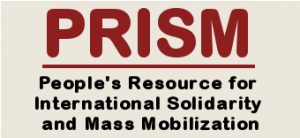
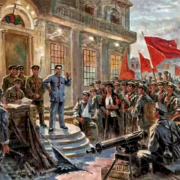
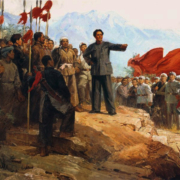
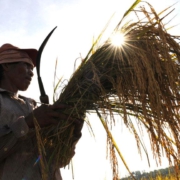
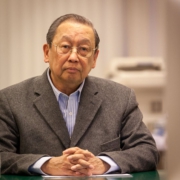
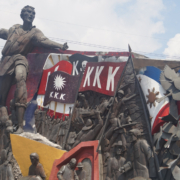
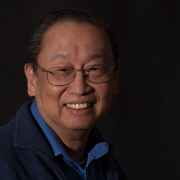
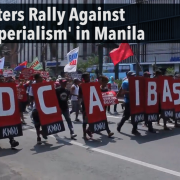
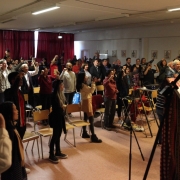 NDFP
NDFP